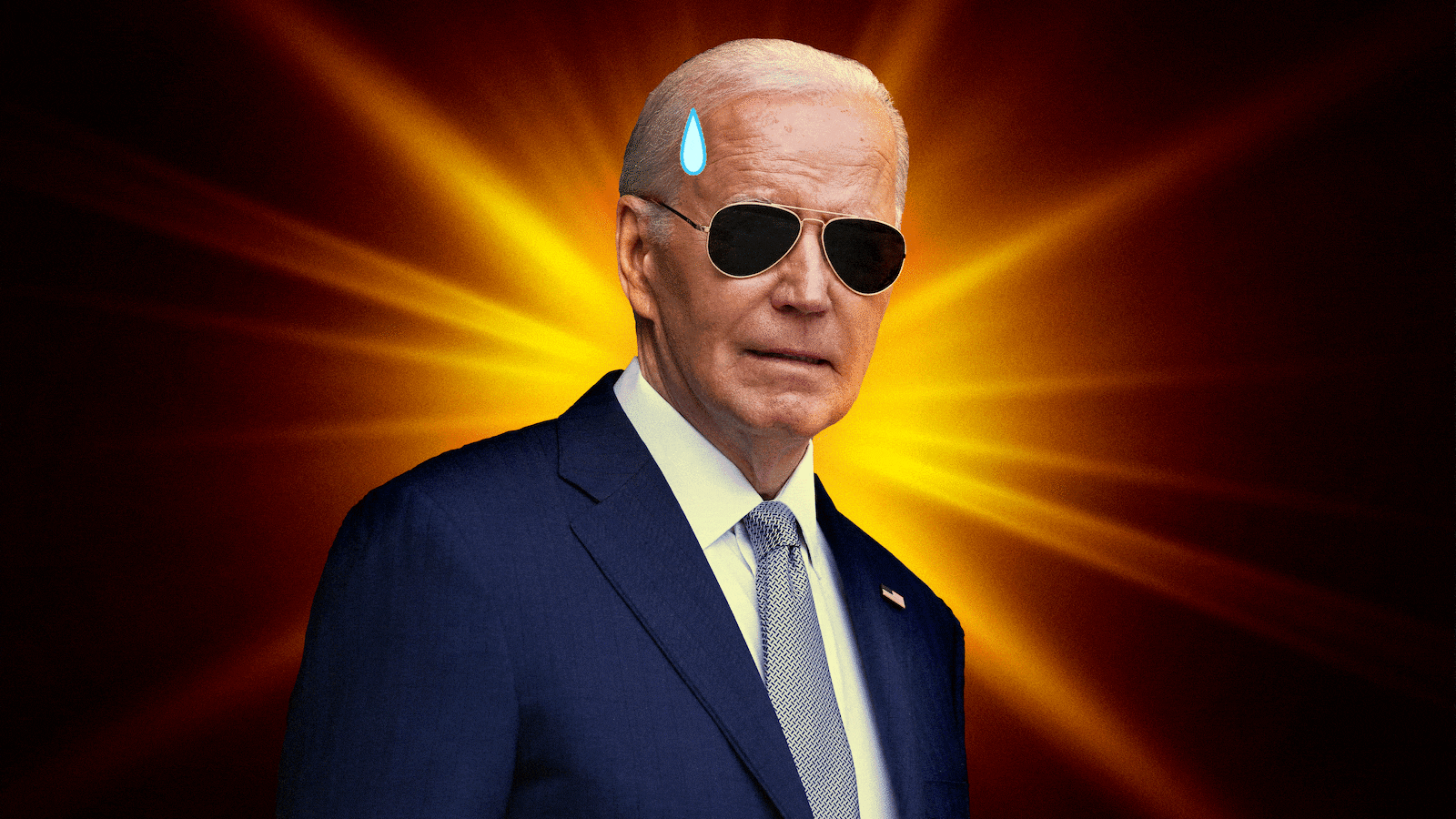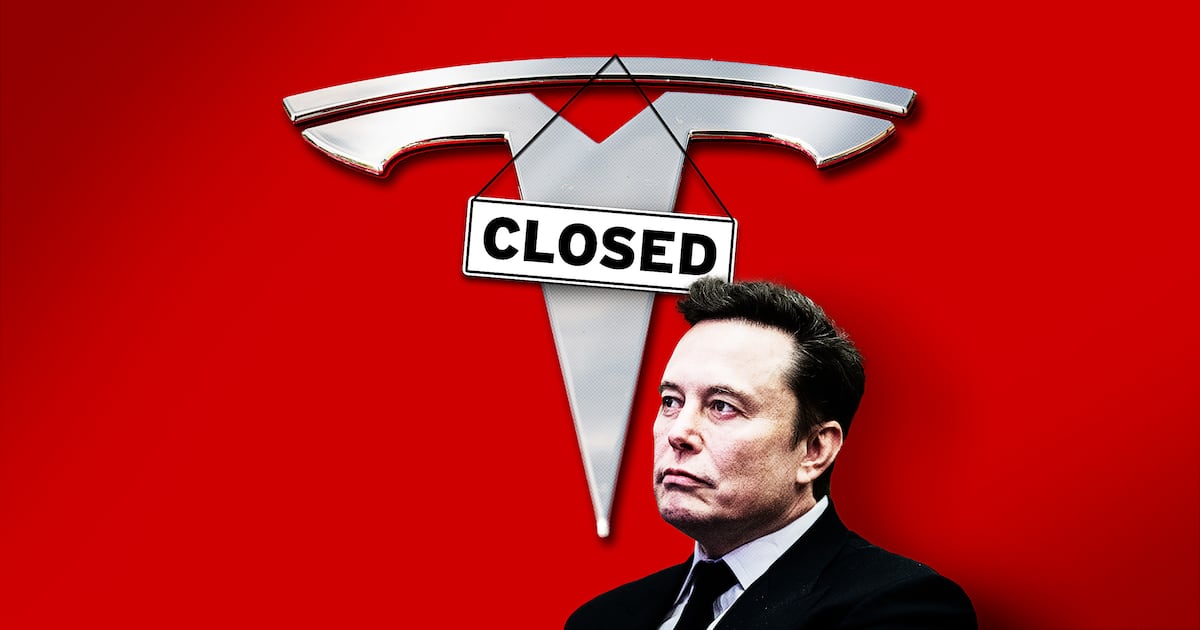Whether or not his campaign admits it, President Joe Biden has a Sun Belt problem.
Biden is holding up just fine in expectedly tight races with Donald Trump in the Rust Belt states of Pennsylvania, Michigan, and Wisconsin. Yet in the Sun Belt—the stretch of states from North Carolina and Georgia to Nevada and Arizona—Trump is giving Biden a shellacking with hefty leads, particularly in those two key desert states, according to a new New York Times/Siena College/Philadelphia Inquirer poll.
“I am fascinated by how quickly his base is abandoning him,” Dave Smith, chairman of Arizona’s Pima County GOP, said of Biden in an interview with The Daily Beast. On the ground, Smith said he’s seen a notable influx of volunteers and a boost in party registration, which he attributed to voter concerns about migrant border crossings, as well as the cost of housing.
The Biden campaign—which did not make anyone available to comment for this story—has been sticking to its steady-as-she-goes messaging, publicly making sure not to sweat the polls. The difficulty of polling younger and Latino voters gives them reason to believe the trend of bigger leads in the Sun Belt is more of a mirage resulting from sampling issues than a genuine electoral obstacle. Team Biden also has field offices and boots on the ground in these states, while the Trump campaign does not, and the long-term benefit of door-to-door organizing is another advantage in the Biden campaign’s favor.
Trump’s 13-point lead in Nevada—a state which hasn’t gone to a Republican in a presidential race since 2004—is seen as particularly aberrant by some Democrats.
The Biden campaign has opened more than 150 offices and hired more than 400 staffers across the battleground states, including in Latino communities like the Maryvale neighborhood in Phoenix, the Asian-American voter-heavy pocket of Southwest Las Vegas, and in rural areas like Alamance County in North Carolina. The Trump campaign, by contrast, doesn’t have any of that infrastructure up and running yet.
Still, the numbers aren’t good.
Even if there were a persistent and historically significant polling error thus far, there are plenty of reasons for the president to sweat the emerging trend of being stuck with a case of the Sun Belt blues.
“Larger scale, there are some indications that Hispanic voters are a little bit more willing to vote for Trump this time around,” longtime Florida-based pollster Brad Coker told The Daily Beast. “If you look at the Rust Belt, it’s not quite like the south.”

President Joe Biden gives a speech at Intel Ocotillo Campus on March 20, 2024 in Chandler, Arizona.
Rebecca Noble/Getty ImagesBiden’s underperformance in the Sun Belt, compared to the Rust Belt, has a few plausible explanations, ranging from demographic differences to partisan trends. Yet, more importantly, the polling trend shows where the most fundamental dividing line of the 2024 campaign will fall, and why the race may hinge on Biden’s ability to hang on for dear life around the Great Lakes states.
All other results being equal from the states Biden and Trump carried in 2020, the president could hold onto a victory if he kept Pennsylvania, Michigan, and Wisconsin. If he can keep Trump at bay in those three, Biden could afford to lose Georgia, Arizona, and Nevada and still clinch an electoral victory with no room to spare—landing right at the required total of 270 electoral votes.
Biden and Trump have remained tight in that trio of Rust Belt states for months, but when it comes to the Sun Belt, Trump has either begun to run away with a bigger lead or still maintained a healthy one.
In Georgia, Trump has held a firm 5 to 6-point lead going back to early March. In Arizona, it’s been a similar story, though the FiveThirtyEight average has shown some tightening while the Times/Siena poll had Trump’s lead at 7 points. And in Nevada, something weird is going on. Just in the past few days in May, Biden has dipped down from an average 4 to 5-point deficit to nearly 7 points, and the Times poll had that alarming 13-point gap.
The Biden campaign pointed The Daily Beast to a quote from Democratic pollster Geoff Garin, who served as a co-chief strategist for Hillary Clinton’s 2008 presidential bid.
"The only consistency in recent public polls is inconsistency,” Garin said in an email. “These results need to be weighed against the 30-plus polls that show Biden up and gaining—which is exactly why drawing broad conclusions about the race based on results from one poll is a mistake. The reality is that many voters are not paying close attention to the election and have not started making up their minds—a dynamic also reflected in today’s poll. These voters will decide this election and only the Biden campaign is doing the work to win them over."
Democratic strategists aren’t hitting the panic button just yet, but it’s becoming harder to make arguments about the polling being too far out from the general election. While six months is still plenty of time, it’s becoming clear Biden needs to clean up with undecided voters—and that might not be possible just yet.
“One of the major questions in this race is going to be who is able to connect with voters who are not tuned-in yet,” Democratic strategist Josh Schwerin told The Daily Beast, “and who likely do not start with a positive opinion of either candidate.”
Another major task for Biden is to claw back his standing with Latino voters, among whom his nationwide advantage over Trump has cratered from nearly 30 points during his first year in office to just 9 points now, according to an Axios-Ipsos Latino poll from April.
Arizona and Nevada have the fourth and fifth-highest shares of eligible Hispanic voters in the country, according to Pew Research data, standing at 25 percent and 22 percent, respectively.
Coker said it’s important to differentiate between different sub-demographics under the massive umbrella of Latino voters. In his home state of Florida, Cuban-Americans have always tilted far more conservative compared to Mexican-Americans, who make up only 15 percent of the Latino vote in Florida but can be closer to 80 percent in western states, Coker noted.
“You’ve sort of seen this uptick in Hispanic support for Trump,” Coker said. “And in states that were relatively close, Nevada and Arizona, that might be the [margin of victory]. Now, Arizona has been red, red, red, red, red, and then only blue last time. Nevada has been the opposite. That has been blue, blue, blue, blue, blue since Bush [in 2004].”
In addition to the Democrats’ organizing advantage in the Sun Belt states, Schwerin argued the newly agreed-upon debate in June between Biden and Trump could shake things up since it falls far earlier in the calendar than the usual slate organized by the Commission on Presidential Debates, which the pair snubbed in favor of a showdown on CNN.
“That will help,” Schwerin said, adding that while “it doesn’t mean the problem gets solved the next day,” it at the very least will hammer home the choice voters have between Biden and Trump.
Schwerin also said he’s optimistic the Biden campaign will have more than enough resources to compete in both the Sun Belt and Rust Belt aggressively, while the Trump campaign may have to make some hard choices down the line if the cash crunch continues.
“It’s a false choice,” Schwerin said of any notion the Biden campaign should triage the Sun Belt states and cut some of them loose to hold onto the likes of Pennsylvania, Michigan, and Wisconsin. “I don’t think it’s an either/or, and fortunately our candidate isn’t spending $50 million a month or whatever it is on legal fees.”









